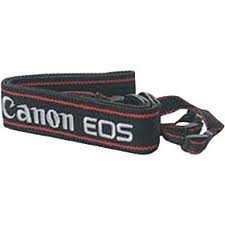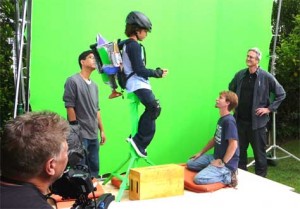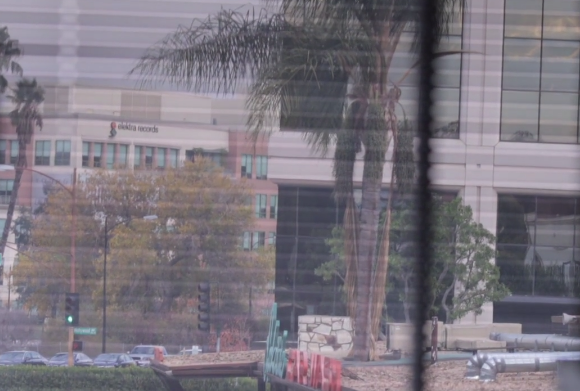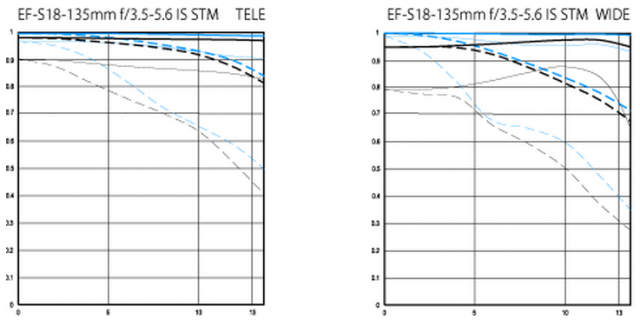


 There’s a new gold rush. It’s filmmakers taking up the Canon DSLRs to shoot 35mm quality films.
There’s a new gold rush. It’s filmmakers taking up the Canon DSLRs to shoot 35mm quality films.
In the gold rush to Alaska, approximately 100,000 people rushed up to strike it rich between 1897 and 1899. Those who landed at Skagway encountered many merchants eager to sell them gear that they “must have” to insure their success. Few bothered to tell the prospectors that the real gold fields were another 550 miles away. Or that it would probably take 30 trips, carrying 65-pound packs on their back to transport enough supplies to last a year, which is what the Canadian authorities demanded. Skagway was full of conmen who would set up a telegraph office to send messages back home. The wires were strung out of town and stopped.
What does this have to do with camera rigs for the Canon DSLR?
Well, there are so many rigs invented and introduced that are perfect I think it’s Skagway all over again.
In our Canon Boot Camp we take the position that the shot should determine the mount you use. Not the other way around.
HAND-HELD SHOT - The shoulder mounted rig is just one option. It’s good for the hand-held look. There are many beautifully-built rigs…Redrock and Zacuto lead the pack in strength and quality. But only one rig really fills the bill if you have to hold the shot steady for longer than thirty seconds (that’s about how long a cameraperson can hold their breath.) It’s the MultiRig by DvTec. They have a rugged support pole descending from the main rig to a waistbelt which transfers the weight of the whole rig to your hips and your legs become your tripod legs so to speak. This liberates your hands. You can drink a Guinness with your left hand and still shoot smoothly, which is why we call it the “Guinness Cam.”
I shot with it for 5 days at the Edinburgh Fringe Festival. We shot the street theater and other events in the venue. ALL hand-held. ALL day long. Starting 9 am. to 2 a.m.
SMOOTH, TV COMMERCIAL PRODUCTION SHOT – The professional dolly (Fisher or others) really shines here, when you’ve got a stable scene with pro actors who’ll hit their marks as you move the camera on the smooth dolly. The downside is having to lay track. But on a stage the floor may be smooth enough. Otherwise you can use 1 by 12 inch boards if the move is short. But when we’re flying to a remote location and the budget’s tight we’ll just take a doorway dolly (using boards we buy at Home Depot for track) OR if the location is outside, we’ll rent a Chrysler Stow and Go. Your whole video production crew can ride to the shoot with the equipment. Then, you offload, stow the seats and set up your camera platform (speed rail or 2 by 12 with a C clamp and tripod head. This allows us to shoot out the side or the back tailgate. Let a little air out of the tires and it’s really pretty smooth. We used it shooting on the airstrip for a pilot training video.
In a pinch you can use a wheelchair. We found this very effective on the cruise line shoots we did. On land, almost any hotel has one you can borrow or rent for your shot.
LOW ANGLE (or tight quarters) – The CamCaddie rigs are great for these. Designed and manufactured by Daniel McElderry, so he could shoot skateboard films, it’s a rugged compact rig at a great price. The Alzo’s Transformer cage is tough, light and adaptable and low cost.
 CHEAPEST & LIGHTEST & SMALLEST – This rig wins the day. It is for short moves and tight quarters. Maybe you’re the last person on earth to hear about it but it’s great. It’s the Canon cloth neckstrap that comes free with the camera. If you pull the strap tight around your neck and press outward, you’ll find you have a pretty steady shot. You can tilt up and pan. It’s good for short shots.
CHEAPEST & LIGHTEST & SMALLEST – This rig wins the day. It is for short moves and tight quarters. Maybe you’re the last person on earth to hear about it but it’s great. It’s the Canon cloth neckstrap that comes free with the camera. If you pull the strap tight around your neck and press outward, you’ll find you have a pretty steady shot. You can tilt up and pan. It’s good for short shots.
I didn’t begin to use it extensively until I was in a small plane trying to shoot. There was no room for a shoulder rig (I’m 6’7″) and it wouldn’t have worked anyway because planes (and cars) hit little bumps and the camera lifts on its own. So I slung the strap under my thigh and pulled up. Now I had 260 pounds of mass (my body) stabilizing the unexpected bumps from the plane. The shot came out smooth and controlled. On the subway loop the strap through the handgrips and pull down, then brace yourself against a vertical pole and you’re solid as a rock. I sometimes substitute a nylon strap with multiple loops in it (get it in a climbing shop) and carabiners running into heavy tie-wraps into the Canon DSLR body so I can quickly lengthen and shorten the attachment points.
STEADICAM – Of course, the Big Daddy is the Steadicam. This rig is out of most Canon DSLR filmmaker’s reach. And it’s actually too light for the rig. We have a policy of not commenting on rigs we haven’t tried. However, if you promise not to tell anybody, we had an old Steadicam Jr. we rigged to the Canon 5D Mark II and it works pretty well. It’s lighter than the Glidecam. Balancing is really easy because it has knobs to move the tray. You’ll probably want to get an arm brace to save your arm. Steadicam does have newer rigs but again, if we haven’t tried it personally we don’t comment.
The Gold Rush to Alaska was over in two years. The Gold Rush to use the Canon DSLR 7D, 5D Mark II and Mark III is still going strong. New gear is always appearing and we’re always willing to take a look but we suggest to mock up the shot first and then pick the rig to get the shot. Not the other way around. And if you’re not sure a rig will work, rent it and see. Then, invest in it. Too many filmmakers feel they have to buy first and then try it out. You can rent from EVS in Burbank. All the salespeople are actually camera operators and they can give you the straight story.

You might hear opinions that the Canon 5D’s 4.2.0 color space can’t deliver good keys for green screen. Well, here’s the word from the trenches. Something you can count on. The Canon 5D MarkII’s green screen shots keyed beautifully. (for more data on 4.2.0 color space got to bottom of this article*)
The Association did green screen tests prior to the shoot and they looked great. So, the client gave us the “green light”.
Green Screen shot with Canon 5D.
GREEN SCREEN LOOKING GOOD…
We shot the green screen on location. The sun was our light source. So we could shoot at ISO 100. White cards below and to the sides of the talent gave a nice edge. As we tell our students in our Canon Bootcamps, always triple save your shots. So, while we were backing up the shots onto two other hard drives, we checked to make sure the key was good (see below).
EVERY WEEK A NEW SHOOT…
We are shooting with the Canon 5D or 7D every week. Green screen, under water, on jibs, process trailers, motorcycles…and we’ve been nothing but pleased with the results.
THE “LOOK” of 35mm film for half the price…
Our clients love how the Canon maximizes their budget and gives them shots as pretty as 35mm film.
IT’S DIGITAL FILM…
We totally agree with Gale Tattersall (D.P. on “House, M.D.”) and Shane Hurlbutt (D.P. on “Terminator: Salvation” and his famous “The Last Three Minutes”) – the Canon DSLR delivers images that bring the excitement back to fine filmmaking. The Canon delivers rich blacks with no noise in low light conditions. It doesn’t do “video freak out” when a bright light source enters the frame. It has a delicious, short depth of field. Plus, editing is a snap. This camera’s a game changer.
YOUR CHOICE: Take our Canon Camera Classes OR Hire one of our trained Canon DSLR crews:
Either way, give us a call 818 841-9660.
It’s the future. It’s cool. And it’s here. Tested. Proven. Fantastic.
*….about 4.2.0 color space. The issue is dealt in depth in the blog <http://www.cinema5d.com/viewtopic.php?f=64&p=76648> , but the simple answer is “the workflow that works the best for us (for RedOne and 5D mark II footage) is to transcode the footage to ProRes 4.2.2. Of course we could do 4.4.4 but we decided that it was a bit overkill, considering the fact that at the end, it will be at best some mpeg4 from the local broadcasters (digital tv).”“The reason why we convert the 5D files to ProRes is the ability the ProRes has to not deteriorate with generations (renders, movies, etc). Also, when everything is native to the sequence setting, rendering is kept to a minimum. Everything that has to be rendered also (subtitles, texts, pictures, etc) all look better when working in a prores sequence compared when we tried in a sequence with the native clips from the 5D (h264).”





- See more at: http://blog.theassociation.tv/#sthash.pO8ZJd6I.dpuf
Polly morgan visits the Canon Boot Camp in Prague
In my pursuit of learning about all things related to HD Video Production, I stumbled across this:
www.dop.net.au/Canon_5DMKII.htm
No offense to Mr. Beck from Down Under, but I’m still trying to wrap my head around this one.
- See more at: http://blog.theassociation.tv/#sthash.pO8ZJd6I.dpuf